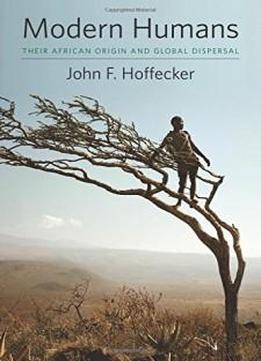
Modern Humans: Their African Origin And Global Dispersal
by John Hoffecker /
2017 / English / EPUB
44 MB Download
Modern Humans
Modern Humans is a vivid account of the most recent―and
perhaps the most important―phase of human evolution: the appearance
of anatomically modern people (
is a vivid account of the most recent―and
perhaps the most important―phase of human evolution: the appearance
of anatomically modern people (Homo sapiens
Homo sapiens) in Africa less
than half a million years ago and their later spread throughout the
world. Leaving no stone unturned, John F. Hoffecker demonstrates
that
) in Africa less
than half a million years ago and their later spread throughout the
world. Leaving no stone unturned, John F. Hoffecker demonstrates
thatHomo sapiens
Homo sapiens represents a “major transition” in the
evolution of living systems in terms of fundamental changes in the
role of non-genetic information.
represents a “major transition” in the
evolution of living systems in terms of fundamental changes in the
role of non-genetic information.Modern Humans
Modern Humans synthesizes recent findings from genetics
(including the rapidly growing body of ancient DNA), the human
fossil record, and archaeology relating to the African origin and
global dispersal of anatomically modern people. Hoffecker places
humans in the broad context of the evolution of life, emphasizing
the critical role of genetic and non-genetic forms of information
in living systems as well as how changes in the storage,
transmission, and translation of information underlie major
transitions in evolution. He also draws on information and
complexity theory to explain the emergence of
synthesizes recent findings from genetics
(including the rapidly growing body of ancient DNA), the human
fossil record, and archaeology relating to the African origin and
global dispersal of anatomically modern people. Hoffecker places
humans in the broad context of the evolution of life, emphasizing
the critical role of genetic and non-genetic forms of information
in living systems as well as how changes in the storage,
transmission, and translation of information underlie major
transitions in evolution. He also draws on information and
complexity theory to explain the emergence ofHomo sapiens
Homo sapiens
in Africa several hundred thousand years ago and the rapid and
unprecedented spread of our species into a variety of environments
in Australia and Eurasia, including the Arctic and Beringia,
beginning between 75,000 and 60,000 years ago. This magisterial
work will appeal to all with an interest in the ever-fascinating
field of human evolution.
in Africa several hundred thousand years ago and the rapid and
unprecedented spread of our species into a variety of environments
in Australia and Eurasia, including the Arctic and Beringia,
beginning between 75,000 and 60,000 years ago. This magisterial
work will appeal to all with an interest in the ever-fascinating
field of human evolution.











